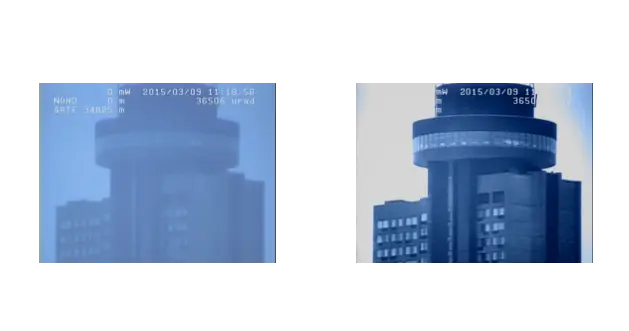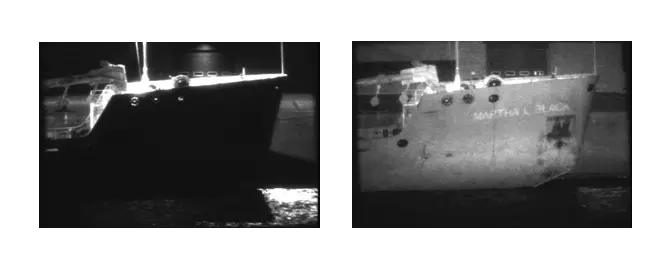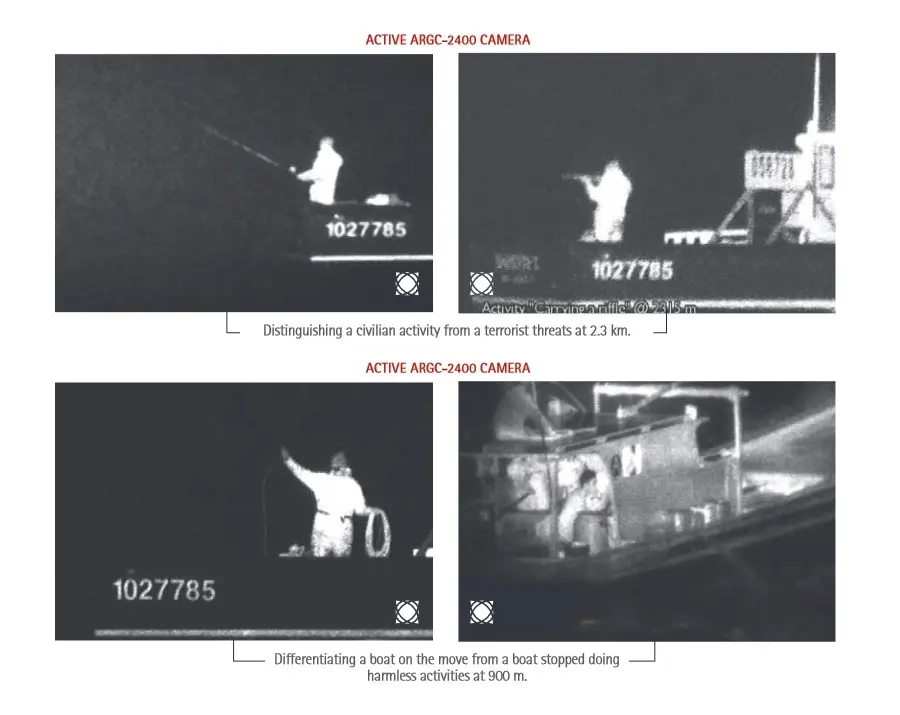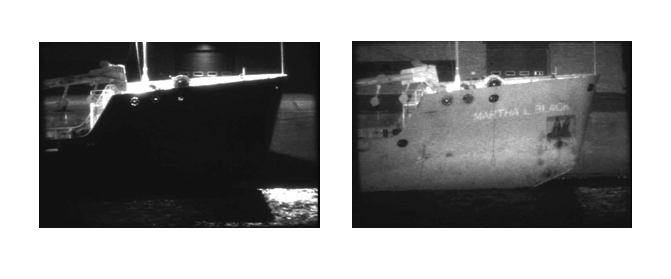Long Range Night Vision
Long Range Night Vision systems allow monitoring activities by ensuring leading-class long-range accuracy.
It's a breakthrough technology that provides superior identification and recognition capabilities compared to the best thermal imager. Long Range Night Vision produces remarkably detailed images over unprecedented distances.
To gather as much information as possible, a night surveillance system must be able to provide high resolution, realtime video rate images providing the reflective properties of paint, materials and ideally, see through glass for a complete observation. Furthermore, these images must be a representative signature of the observed object, ideally similar to daytime and not affected by different temperature conditions.
Coastal & Border control
The rise of terrorist threats and escalating piracy in difficult-to-monitor waterways are heightening concerns about crew safety and potential cargo losses. One effective solution is the implementation of perimeter awareness measures onboard, such as long-range night vision cameras, which enable earlier detection of threats even in low visibility conditions.
This capability facilitates more efficient border control. Additionally, the surge in refugees, illegal immigration, and smuggling is prompting governments to enhance their coastal and border surveillance programs. Many open borders are currently being reevaluated, with several European countries intensifying security along hundreds of kilometers of borders and coastlines. As a result, systematic measures for closer surveillance are being put into place.
It is also used for environmental surveillance aimed at reducing the transport of illegal oil and toxic materials. It can also be used in anti-drug programs, search and rescue operations, and to identify illegal fishing.
Vessel Traffic Services site protection
Advanced security criteria now require a visual confirmation of the number of people declared by the crew. It is equally important to identify those on board, monitor their activities, and assess whether the personnel on the bridge appear to be under duress. In today's world, surveillance solutions must include the capability to observe if people or specific cargo are being transferred between a ship and a small craft, such as a zodiac, or if goods are being illegally discarded overboard.
A vessel traffic service is a marine traffic monitoring system established by harbor or port authorities, similar to air traffic control for aircraft. It's a service implemented by a competent authority designed to improve the safety and efficiency of vessel traffic and protect the environment. Typical vessel traffic service systems use radar, closed-circuit television, VHF radiotelephony and an automatic identification system to keep track of vessel movements and provide navigational safety in a limited geographical area.





Long Range Night Vision
Long Range Night Vision systems allow monitoring activities by ensuring leading-class long-range accuracy.
It's a breakthrough technology that provides superior identification and recognition capabilities compared to the best thermal imager. Long Range Night Vision produces remarkably detailed images over unprecedented distances.
To gather as much information as possible, a night surveillance system must be able to provide high resolution, realtime video rate images providing the reflective properties of paint, materials and ideally, see through glass for a complete observation. Furthermore, these images must be a representative signature of the observed object, ideally similar to daytime and not affected by different temperature conditions.

Coastal & Border control
The rise of terrorist threats and escalating piracy in difficult-to-monitor waterways are heightening concerns about crew safety and potential cargo losses. One effective solution is the implementation of perimeter awareness measures onboard, such as long-range night vision cameras, which enable earlier detection of threats even in low visibility conditions.

This capability facilitates more efficient border control. Additionally, the surge in refugees, illegal immigration, and smuggling is prompting governments to enhance their coastal and border surveillance programs. Many open borders are currently being reevaluated, with several European countries intensifying security along hundreds of kilometers of borders and coastlines. As a result, systematic measures for closer surveillance are being put into place.
It is also used for environmental surveillance aimed at reducing the transport of illegal oil and toxic materials. It can also be used in anti-drug programs, search and rescue operations, and to identify illegal fishing.

Vessel Traffic Services site protection
Advanced security criteria now require a visual confirmation of the number of people declared by the crew. It is equally important to identify those on board, monitor their activities, and assess whether the personnel on the bridge appear to be under duress. In today's world, surveillance solutions must include the capability to observe if people or specific cargo are being transferred between a ship and a small craft, such as a zodiac, or if goods are being illegally discarded overboard.
A vessel traffic service is a marine traffic monitoring system established by harbor or port authorities, similar to air traffic control for aircraft. It's a service implemented by a competent authority designed to improve the safety and efficiency of vessel traffic and protect the environment. Typical vessel traffic service systems use radar, closed-circuit television, VHF radiotelephony and an automatic identification system to keep track of vessel movements and provide navigational safety in a limited geographical area.








